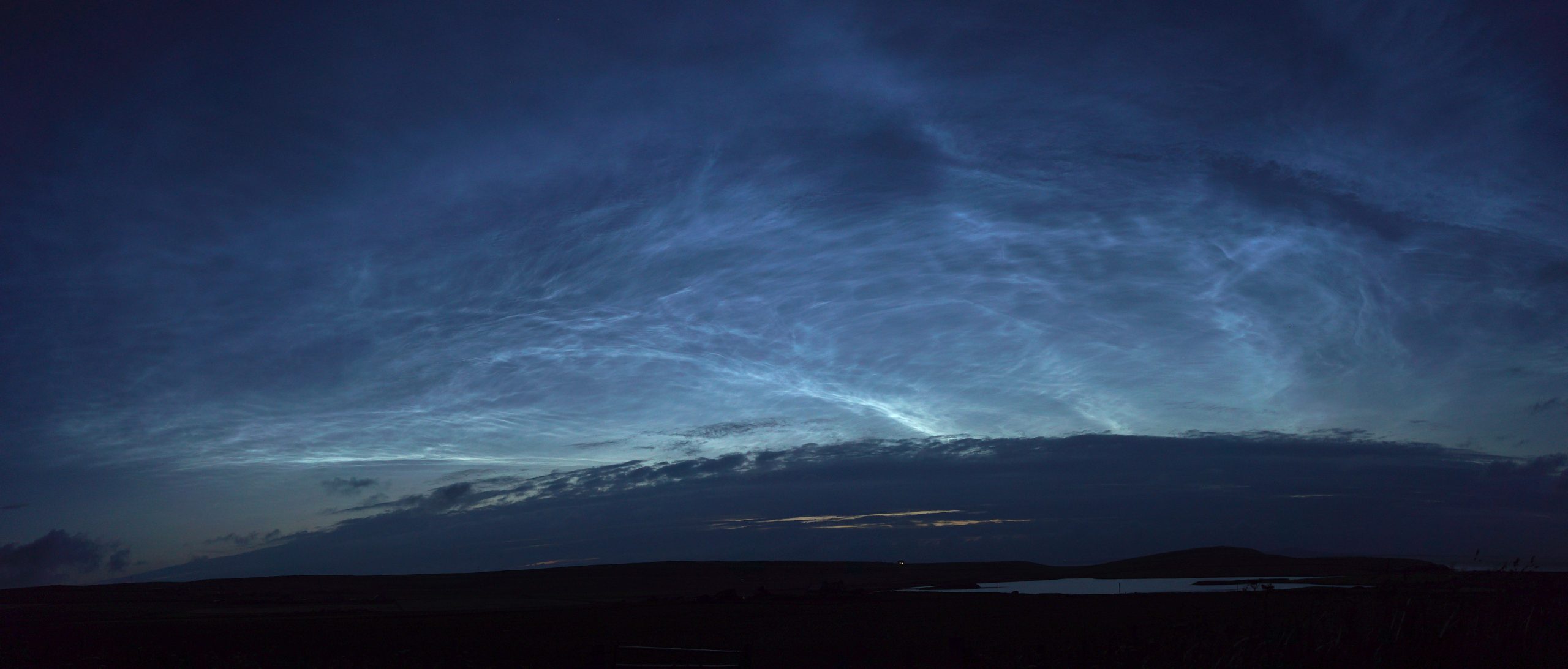Auroral & noctilucent cloud activity, 2023 June 19 – August 18
2023 October 10
With coronal mass ejections and sunspot numbers regularly in triple figures, the odd X-class flare and several coronal holes, the Sun is out of minimum, and activity is climbing faster than anticipated. The dark sky is starting to return up north as the nights get longer. Aurora sightings over this period are at five, and noctilucent cloud (NLC) sightings are at 77.
Aurora
In late June, there were two G4-class storms, three R1-class storms and no sightings.
July had five G1, twenty R1, two R2, one R3, six S1 and one S2-class storms, and four observations. The first was by Ray Taylor from East Yorkshire on Jul 7/8. The next was by Nick Quinn on Jul 15/16 from Steyning, W Sussex. Ray Taylor saw it again on Jul 20/21 from East Yorkshire, and the last was from Denis Buczynski in Tarbatness on Jul 25/26.
Early August saw one G3, five R1, one R2, two R3 and one G3-class storm, and one observation, by Denis Buczynski from Tarbatness on Jul 7/8.

Noctilucent cloud
The northern season has continued, but much quieter this year. The weather satellite NOAA-21 is having some problems, so there was a gap in information from Jul 19 to Aug 13. There were 77 sightings from 38 observers.
There was one sighting on Jun 19/20, five on Jun 20/21, one on Jun 23/24, eight on Jun 25/26 and three on Jun 29/30, making a total of 18.
There was one sighting on Jul 1/2, two on Jul 3/4, one on Jul 4/5, 10 on Jul 5/6, seven on Jul 7/8, two on Jul 9/10, seven on Jul 11/12, two on Jul 12/13, 11 on Jul 13/14, one on Jul 15/16, one on Jul 16/17, seven on Jul 18/19, one on Jul 19/20, one on Jul 23/24, one on Jul 24/25, three on Jul 25/26 and one on Jul 27/28, making a total of 58.
At the time of writing, just one sighting has been received in early August, and that was on Aug 1/2.
General
The use of the NOAA-21 polar-orbiting satellite for noctilucent-cloud observation is a godsend, even if the data are a bit difficult to read. They seem to come only a day late so tracking should be easier.
Sightings from NLCnet are not included in this report.
There is a site for those of you who are out of range of the aurora. It is a webcam (bit.ly/3ffFAA7) operated by the Shetland tourist board that looks north and, if there is no cloud, will give a good view of any aurora or noctilucent cloud. In addition, they have added two more cameras further north specifically for the aurora. These are at bit.ly/3Ghkg9j and bit.ly/3w2vfBl. I have also discovered a very good live cam on YouTube, called Lofoten Live Aurora Cam. It seems to be blessed with good weather.
Thanks go to Prof Cora Randall, Dr Lynn Harvey and Matt DeLand for all the help and information they have supplied to the Section, and to all the observers who have contributed. I would ask you to keep sending in those reports.
https://britastro.org/wp-content/uploads/2023/10/Potter_21cm.tif
| The British Astronomical Association supports amateur astronomers around the UK and the rest of the world. Find out more about the BAA or join us. |
